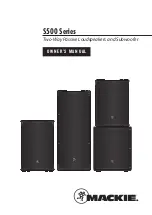
GAS
INPUT
45°
45°
45°
60°
60°
60°
12
Installation
• Turn ON the general switch (
B
) in the back of the welder.
• When tuning ON the switch, the LCD screen will be ON
and the internal fan will start working.
Turn ON
• As a general rule, low currents require that the micro
wire be fed using low speed. If is necessary to increase
the work current, the micro wire speed shall increase
likewise.
• Remember to make tests in scrap material with the
same characteristics of the material to be work with
because, aside from the micro wire current and speed
there are other factors involved in the welder
performance such as diameter and characteristics of the
micro wire, distance between the nozzle and the work
material, the angle of the torch and the amount of gas
supplied.
Adjustments
Micro Wire Feeding Rhythm
• Connect the welder to the power supply and turn ON the
welder switch to verify the micro wire feeding rhythm.
• The micro wire speed to the torch is controlled from the
control panel with the MIG welding function selected (see
page 14).
• Regardless of the speed selected, the micro wire shall be
fed continuously and shall be stopped immediately when
releasing the torch trigger. If the micro wire shows trouble
going out or is not stopping after releasing the trigger, you
need to make two adjustments:
• Adjust pressure on the micro wire with the tension
knob (
L
). Be mindful that excessive pressure hinders
feeding micro wire, while an insufficient pressure cannot
push the micro wire.
• Tighten the spool knob (
M
). If the knob is loose, the
spool could go on turning after releasing the torch trigger
and the micro wire feed would not stop immediately.
Preparations
• Only with experience, practice and care a good welding
job can be guaranteed.
• The factors inventing in the welding process are many:
required current, distance between the electrode and the
work piece, welding speed and direction, thickness and
type of material, position of the work piece, electrode
angle and in addition, electrode caliber, material and
electrode covering. Therefore, is advisable that before
carrying out any welding job, make trial practices in scrap
material to determine which are the specific requirements
of the work.
• The work pieces’ area where the welding is going to be
applied shall be free of oxide and paint.
• The joints between sheets with calibers higher than 1/8”
must be beveled to get an adequate weld (
A
).
• Remember that the torch cable shall be totally unrolled
so that the micro wire can circulate correctly.
• Cut the remaining micro wire to stick out 8mm to 10 mm
from the contact nozzle, depending on the job to carry out.
• Close the cabinet. The welder is ready to work.
ENGLISH
M
L
A
B
DRAFT
DRAFT
DRAFT











































